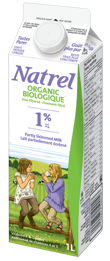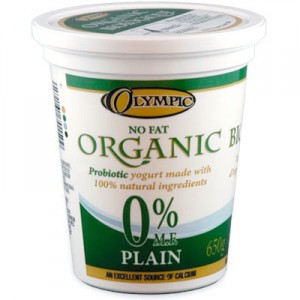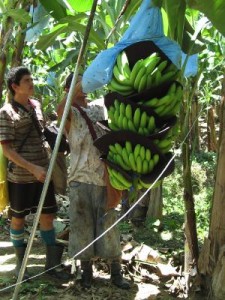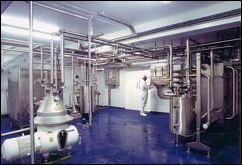After breakfast it’s off to the gym for a workout. Once that is complete, I make my way back home to enjoy the benefits of a protein shake. The shake consists of Ultimate Nutrition Whey Protein, Natrel 1% Organic Milk, Olympic Plain Organic Yogurt and an unknown brand of Banana.
Protein Powder – 66g portion/260 Calories Consumed
Banana – 126g portion/ 112 Calories Consumed
Milk – 250ml portion/ 110 Calories Consumed
Yogurt – 175g portion/ 70 Calories Consumed
I blend up the constituents and ponder their formation.
First, the protein powder. Whey is a byproduct of the cheese making process (oil). It is a liquid milk serum. The product is often purchased from cheese factories, loaded (oil) and transported (oil) to supplement plants. Here, the whey is further processed (oil) to remove lactose and lipids. The product is called whey isolate. Finally, it is dried (oil), packaged into big plastic tubs (oil), loaded (oil) and transported (oil) to my local health food store, in this case, my gym. I walk to the gym.
Since we’ve already discussed the milk process in another post, let’s move on the banana. Unfortunately, I wasn’t able to dig up as much specific information about the banana as I had hoped. The bunch of bananas at my house had no labels and I haven’t gone back to the grocery store to inquire. For our purposes, let’s pretend it was a Chiquita banana.
Chiquita mostly owns farms in Latin America. UNCTAD suggests that Latin American banana plantations are large scale operations, that have high inputs (oil) and create high yields. The unit costs are low because volume is so high, this means worker wages are very low and shipping costs are lower than independent shippers. Also, banana plants are notoriously attractive to pests, so high volumes of pesticides are used on the vast majority of plantations.
Bananas are harvested manually. They are collected and carried to tables to be sorted, manually. Once sorted, they are washed, packed and manually loaded onto trucks, where they are transported (oil) to shipping ports. The bananas are then loaded (oil) and shipped (big oil) to North American ports where they are unloaded (oil) and transported (big oil) to various warehouses for ripening and more distribution (oil) to grocers.
Finally, we’ll take a look at the production and transportation of Olympic organic yogurt.
The best thing about the ingredients list on my yogurt is that it contains only skim milk ingredients and bacteria cultures. Since we’ve already taken a look at the milk-getting processes let’s skip over to what Olympic does once they’ve acquire the milk from the dairy farm.
Olympic Dairy factory is located in Fraser Valley, BC. They acquire milk products from certified organic farms in BC. The products are loaded (oil), transported to (oil) and unloaded (oil) at the Olympic Dairy factory. The first process is modification (oil), where fats are removed to get the desired consistency. Next, the milk is pasteurized (oil) and homogenized (oil) to get rid of all bacteria and disperse fat molecules. Then, bacteria cultures are reintroduced into the batch so that fermentation can occur. The resulting yogurt is then poured into plastic containers (oil) and boxed for transport.
Since Olympic Dairy is in BC, the yogurt is transported (big oil) all the way across the country to Montreal. Let’s optimistically say that it is brought right to my grocer.





